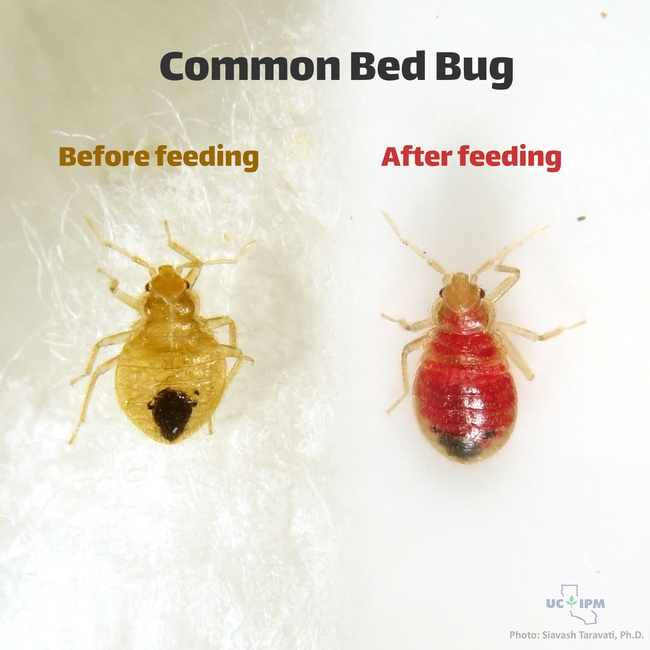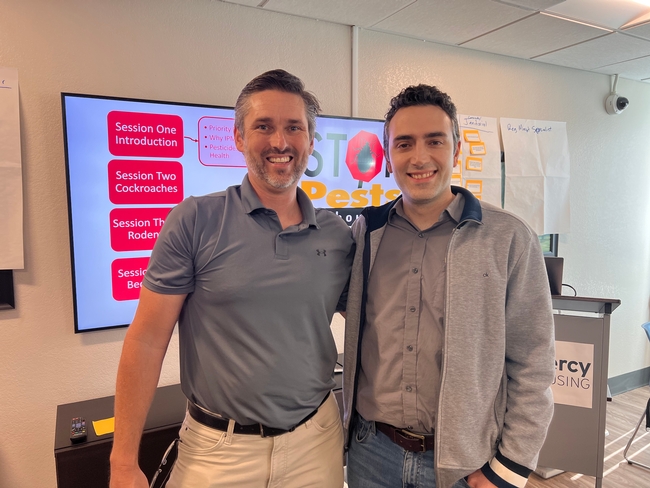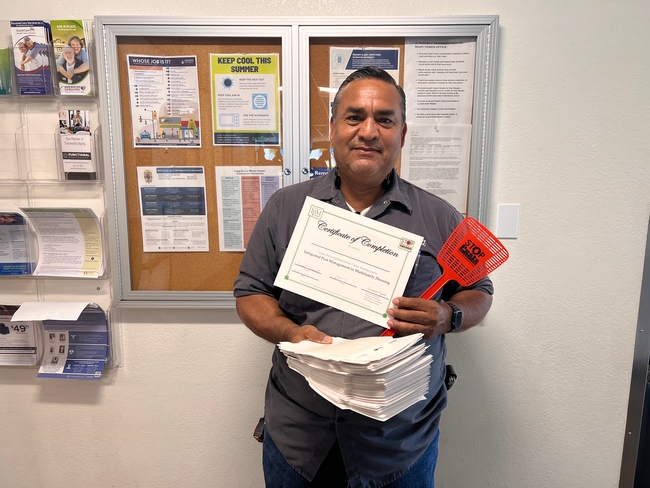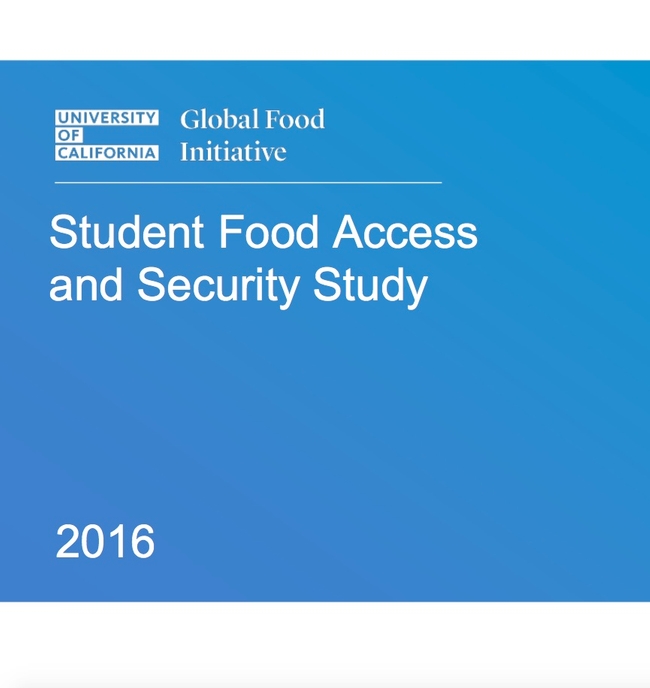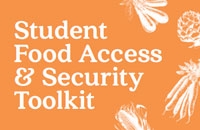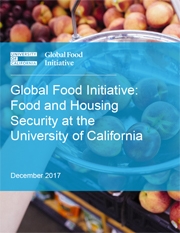Posts Tagged: housing
UC Cooperative Extension advisor helps property managers prevent pests in the home
Living with pests, or “unwanted guests” as some put it, can take a physical, mental and economic toll. For people living in multi-family unit housing, like an apartment complex where everyone lives under one roof, a single infestation of insects or rodents can expose all residents.
Using integrated pest management, or IPM, residents and property managers can detect infestations early and control severe ones and protect people. IPM programs can also save money. IPM saved a 75-unit complex in Contra Costa County $11,121 annually. Similarly, in Santa Clara County, a 59-unit complex saved $1,321 on pest control annually after implementing a proactive IPM program.
This summer, regional directors, property managers, residential service coordinators, maintenance managers and groundskeepers of Mercy Housing – a nonprofit organization that provides affordable, low-income housing – gathered in Long Beach to learn about in-home IPM. The session was led by Siavash Taravati, University of California Cooperative Extension area IPM advisor for Los Angeles, Orange, Riverside and San Bernardino Counties, and
Josh Shoemaker, an entomologist and private consultant.
Taravati and Shoemaker collaborated with StopPests in Housing, a national program out of Cornell University's Northeastern IPM Center, which seeks to improve pest control in affordable housing and teach management practices for cockroaches, bed bugs and rodents within and around the home.
During their presentation, Taravati introduced participants to the IPM principles and emphasized the importance of monitoring pests.
“IPM is all about making informed decisions which requires knowing the latest status of an infestation,” explained Taravati. “That's where monitoring comes into play. It can help us to identify the exact species we are dealing with as well as telling us if an infestation is growing or shrinking.”
“Monitoring is foundational,” agreed Shoemaker. “If a program does not include monitoring, it's not an IPM program.”
According to Shoemaker, the benefit of partnering with UC IPM is their sharp focus on general IPM, which includes monitoring. “It's real IPM, that prioritizes the well-being of the public,” said Shoemaker, who's eager to continue working with Cooperative Extension and Taravati to ensure that children are growing up in safe environments.
Pest control treatments commonly take place following a serious infestation or several complaints, but IPM promotes constant monitoring to prevent heavy infestations from ever happening. It's a proactive approach rather than a reactive or emergency-response. For many attendees, the training revealed a need to engage with pest management operators more closely.
Training prompts changes that improve safety for residents
Pest management operators commonly use pesticide sprays to control pests. Besides inconveniencing residents, forcing them to do extensive preparations and evacuate their unit until it's safe to return, sprays increase exposure risk to pesticides since the aerosols can linger and land on surfaces.
Instead, Taravati and Shoemaker recommend using gel baits, which are much safer to apply and can target a specific area of a home, including crevices, instead of along all the walls.
“Now that I'm more informed, I'll be speaking to my contractor to discuss how we can switch their approach from a bug spray to a gel,” said Leonardo Pinuelas, a maintenance manager for Mercy Housing.
Pinuelas is not the only one wanting to modify their program, however. According to feedback from staff members at the Housing Authority of the City of Los Angeles who experienced the same training earlier this year, they prompted their team to amend their pest extermination to include dusting, or applying insecticidal dusts, against roaches, and to review and update their existing IPM plan and practices where appropriate.
Cindy Wise, area director of operations for Mercy Housing, said that in her 35 years, this was one of the few trainings that engaged her staff so actively. “I couldn't help but text my regional vice president to say that our managers were actively participating and asking questions. That doesn't happen often, not even in our own meetings,” said Wise.
Many of the attendees, with their new understanding of how cockroaches move through a structure, shared that they are eager to return to work to meet with residents and support them.
“If you've got roaches in one unit, you've got them in the entire building,” Wise said.
Shoemaker recalls the words of Judy Black, senior technical entomologist for Orkin, and Dini Miller, entomologist at Virginia Tech, who urge the importance of inspections and documentation as IPM best practices.
Although reporting pests in the home can make one feel embarrassed, Wise said she is more interested in making residents feel empowered to not only report signs of infestation to the staff, but to their neighbors.
Training residents is certainly beneficial, but as experts such as Black and Miller have pointed out, housing managers must do their part, instead of scapegoating tenants for their cleaning habits.
StopPests provides free IPM training and technical assistance to Housing and Urban Development assisted properties. If you are interested in the training provided by Taravati and Shoemaker, in collaboration with StopPests, visit StopPests.org for more information.
No joke: The reality of the starving student and what UC is doing to help
As we celebrate the winter holiday season with its many joyful occasions, it's sobering to think how many people are in need of nutritious food. Millions of people are at risk of going hungry, says Feeding America. And according to groundbreaking studies by the University of California, we now know that a large number of college students are among the hungry.
A significant problem, “starving students” are not a lighthearted joke: students are going hungry and sometimes homeless, too. Food and housing insecurity among college students threatens their health, as well as their academic achievements.
Gauging college student food insecurity
The University of California began examining the issue of student food insecurity in 2015 with the Student Food Access and Security Surveys funded by President Napolitano as part of the UC Global Food Initiative. The resulting Student Food Access and Security Study was authored by the UC ANR Nutrition Policy Institute's Lorrene Ritchie and Suzanna Martinez and UC Santa Barbara's Katie Maynard.
The Student Food Access and Security Study examined the results of two surveys administered online in spring 2015 to a random sample of more than 66,000 students across all 10 UC campuses. Fourteen percent of the students -- 8,932 undergraduate and graduate students in all -- responded.
Nineteen percent of the students responding to the survey had “very low” food security, which the U.S. Department of Agriculture (USDA) defines as experiencing reduced food intake at times due to limited resources. An additional 23 percent of survey respondents had “low” food security, which the USDA defines as reduced quality, variety or desirability of diet, with little or no indication of reduced food intake.
Added together, an alarming 42 percent of the students surveyed were food insecure.
Communicating best practices and lessons learned
Soon after the Student Food Access and Security Survey results were published, partners of the UC Global Food Initiative throughout the UC system began developing the Student Food Access and Security toolkit.
The toolkit compiles best practices that have evolved at UC campuses as the university advanced efforts to nourish and support students.
Each section of the toolkit provides examples across multiple campuses to highlight the range of activities underway, as well as lessons learned.
Meeting basic needs: Food security and housing security
Expenses other than tuition can make up more than 60 percent of the cost of attending college today. The cost of living for college students has risen by more than 80 percent over the past four decades.
To better understand the prevalence of food insecurity among University of California students, the university has continued to examine the issue of student food insecurity and is beginning to assess students' housing insecurity. Food security and housing security are basic needs that students must meet to maintain their health and well-being so that they can focus on achieving academically.
Moving forward: implementing a basic needs master plan
A new report, “Global Food Initiative: Food and Housing Security at the University of California” was released December 20, 2017, and an executive summary is also available. This new report recognizes student basic needs as a statewide and national issue.
UC has done much over the past three years to help students meet basic needs. The findings from the new report will help UC go even further. The new findings will inform strategies for addressing basic needs security, including the creation of a UC basic needs master plan.
Perhaps we can retire the “joke” of the starving student after all.
Additional resources:
- Wisconsin HOPE Lab Study: Hungry and Homeless in College
- #RealCollege
- Paying the Price: College Costs, Financial Aid, and the Betrayal of the American Dream
- The FAST Fund
Students design a solar home for farmworkers
When a team of UC Davis students packs up its house and travels to Irvine next year for the U.S. Department of Energy's 2015 Solar Decathlon competition, its members will bring not only a desire to win, but also to make zero-net-energy homes more affordable.
After submitting an entry for the first time, UC Davis was one of 20 universities selected in February to compete in the Solar Decathlon. The competition draws students and scientists from universities across the nation — from Yale and Vanderbilt to CalPoly and Sacramento State — to design and build solar-powered homes that are energy efficient and attractive.
Meeting a competition milestone, UC Davis' team, Aggie Sol, submitted 80 percent-complete design documents to the department on Oct. 9. The UC Davis project is designed to be a marketable, sustainable house for farmworkers and other low-income communities. Complete plans for the home are due in January, when construction will begin at UC Davis. In October 2015, the home will be disassembled, packed in pieces and transported to the competition site in Irvine.
“I really want to see solar homes everywhere,” said Aggie Sol team member Payman Alemi, a civil and environmental engineering major. “I want every house to be solar powered, and I want every car to be electric. I want everything to be sustainable, and I think that developing a mass marketable house is a big stepping stone.”
Connecting a campus
In addition to addressing a social and environmental problem, the project also provides unique educational opportunities for undergraduate and graduate students.
It connects students in the fields of engineering, architecture, design, communication and development. They've drawn on the expertise and support of faculty in the colleges of Letters and Sciences, Engineering, and Agricultural and Environmental Sciences. They've also tapped the experience of several energy centers on campus—most located at West Village—including the Institute of Transportation Studies, Energy Efficiency Center, Plug-In Hybrid and Electric Vehicle Research Center, and Center for Water Energy Efficiency.
“I heard about what we were going to do about ZNE housing for low-income families, and that really struck a chord with me, being from a low-income neighborhood,” said team member Alejandro Perez, a civil and environmental engineering major. “I really want to make my own house energy efficient, but it's really costly, and it's not really practical where I'm from. Just being part of that effort to make it more affordable really inspired me to be part of the team.”
And while team Aggie Sol is made of about 20 students, an estimated 200 to 500 students from various disciplines will study the project in the coming months, including students from UC Davis Extension, the continuing education division of UC Davis.
The project students are also working with the UC Davis Graduate School of Management and the Division of Social Sciences to create a business plan for the home.
“We want to use this as a way to showcase the ability for zero net energy to be affordable and to do it with a business model in place to implement change in California,” said faculty adviser Frank Loge, a professor of civil and environmental engineering. “If we don't win the competition and still market it, some of us will feel like this has been a very successful effort.”
Nothing but net
UC Davis has proven itself a national leader in zero-net-energy design. In 2011, it opened West Village, a public-private partnership with West Village Community Partnership LLC and the nation's largest planned zero-net-energy community. This past spring, it debuted the Honda Smart Home, which produces enough renewable energy to power both the home and a Honda Fit electric vehicle in its garage.
Private builders and homeowners worldwide have also taken on the challenge of creating homes that produce as much energy as they consume, and the California Public Utilities Commission has a goal for all new residential homes to be zero net energy by 2020. Yet such residences still tend to fall on the upper financial spectrum of the real est
ate market.
“As part of our effort at UC Davis, we want to make zero-net-energy housing affordable for everyone,” Loge said. “We're trying to drive down the price point of zero-net-energy housing to help the housing market understand that you can have affordable, nice homes that are zero net energy.”
Big cut in price
Price estimates for most homes that compete in the Decathlon range from $300 to $350 per square foot. Team Aggie Sol intends to cut that price by more than half, to $70 to $150 per square foot.
One way they're doing that is by creating a relatively simple, modular design using prefabricated materials. The Aggie Sol design also addresses the health and living concerns associated with farmworkers' current housing conditions, such as poor air quality, crowding and lack of shade.
The home combines public and private spaces in three linear zones: Two climate-controlled living spaces are separated by an enclosed deck. The zones act as climate buffers that maximize passive cooling in summer and passive heating in winter. It will also feature “smart home” technology that aligns the home's needs with the electrical grid, communicating with the resident and power provider to manage energy systems more effectively.
The team plans to begin building the house in January on the UC Davis campus but has not yet chosen a location. Loge said they intend for the home to be built in a public place.
The Department of Energy provided a $50,000 grant to Aggie Sol, while the team is attempting to raise at least another $700,000 for training, travel, equipment, uniforms and team-building costs.

